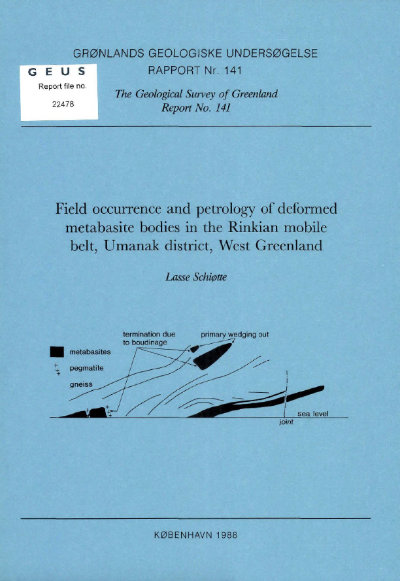Field occurrence and petrology of deformed metabasite bodies in the Rinkian mobile belt, Umanak district, West Greenland
DOI:
https://doi.org/10.34194/rapggu.v141.8053Abstract
Tabular, pod-shaped and irregular discordant metabasite bodies intruding the Archaean gneisses in the Umanak district constitute a series of tholeiitic layered intrusions. The magma evolution was controlled by fractional crystallisation of olivine and Cr-spinel in the initial stages, quickly superseded by pyroxenes. Fractional crystallisation of orthopyroxene was of major significance during most of the igneous evolution. Cumulus plagioclase came in relatively late. The metabasite bodies are remarkably well differentiated, and differentiation in a common magma reservoir prior to emplacement is suggested. Trace element patterns and Sm-Nd isotopic characteristics are compatibie with contamination in a crustal magma chamber. Crustal contamination during and after emplacement did not occur. The igneous layering gives rise to an asymmetry which enables recognition of inversion of metabasite bodies relative to each other after their intrusion thus establishing that at least one phase of recumbent folding postdates metabasite intrusion. Probably most of the large-scale recumbent folds that characterise the tectonic pattern in the Umanak district are of post-metabasite (Rinkian) age (about 1800-1900 Ma). The metabasite bodies owe their shape partly to primary irregularities, partly to boudinage on the limbs of recumbent folds. The Rinkian deformation was accompanied by amphibolite facies metamorphism which only weakly affected the metabasite bodies. Nevertheless they possess a dry metamorphic mineral assemblage which mayeither be auto-metamorphic or developed during the Rinkian deformation and metamorphism in a water deficient environment. Extensive re-equilibration of igneous minerals (particularly pyroxenes) is characteristic of this dry metamorphism. Moreover plagioclase in the olivine bearing parts of the igneous bodies is cloudy brown due to a high content of sub-microscopic spinel inclusions whilst in chemically more evolved parts of the intrusions garnet has grown at the expense of plagioclase.
Downloads
Published
Issue
Section
License
This article is distributed under a CC-BY 4.0 licence, permitting free redistribution and reproduction for any purpose, even commercial, provided proper citation of the original work. Author(s) retain copyright over the article contents.


